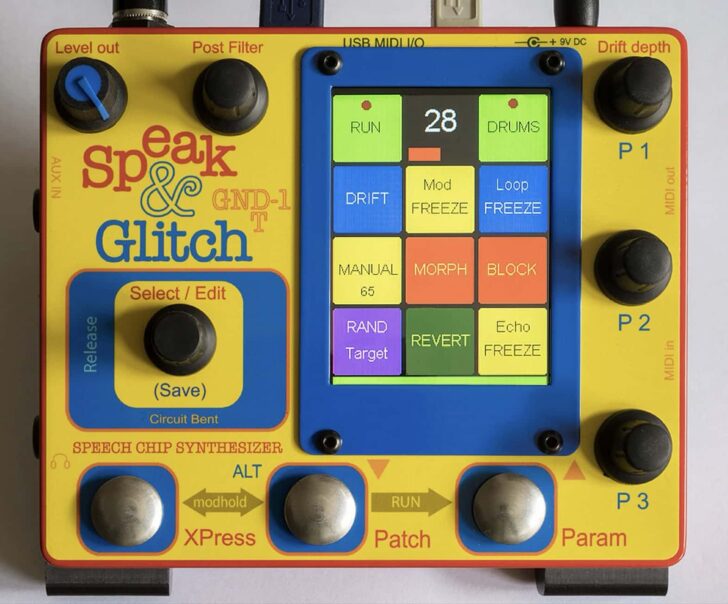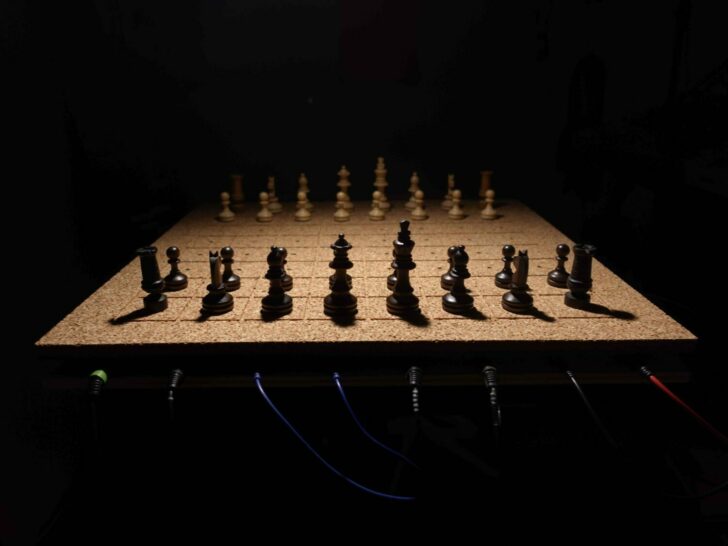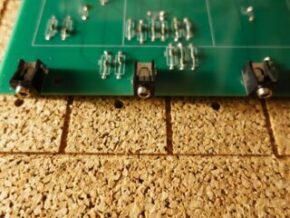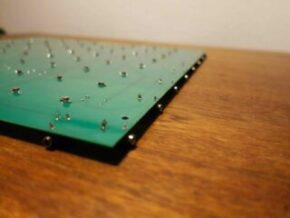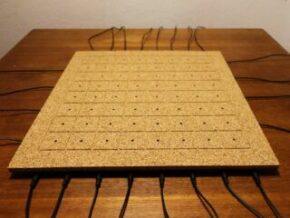Polygene Synthesizer Hands-On Demo
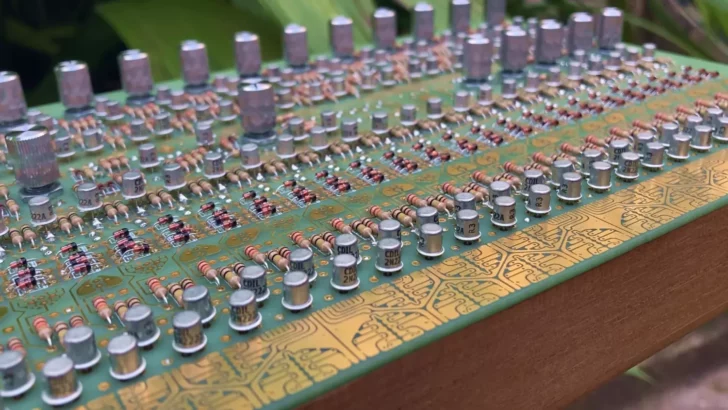
LA Priest shared this demo of the Polygene, an all-analog, class A, all-transistor polyphonic synthesizer.
Inspired by the earliest polysynths of the 1970s, the Polygene is fully polyphonic, can be tuned to any scale or tuning, is multi-timbral and completely touch sensitive:
What they have to say about it:
“Touching any part of the synthesizer bridges connections in the circuitry and creates a unique sound.
Every area of the instrument’s gold plated circuitry can change its tone. At the top, oscillator transistors can be synchronised by touching them, while below there are 24 pressure sensitive polyphonic pads and at the bottom a 24 note keyboard triggers a more familiar polyphonic synthesizer voice.
All of these can be played simultaneously and there are many more effects of the circuitry to be discovered, as each of the traces react differently to the touch.
12 tuning controls allow you to tune the 12 pairs of oscillators to any scale, from a standard equal tuning to any microtonal, non-western or even unison tuning.
The bottom 3 oscillators can go into the sub-bass range and using the oscillator sync method of bridging the transistors by hand, the bass oscillators can play a wider range of notes.
By using transistors as the only active components in the instrument, each oscillator passes through only a handful of sound shaping components before reaching your ears. Instruments that rely heavily on transistors (like the Minimoog and EMS Synthi for example) are famous for their raw, untamed sound that has much to do with this circuit topology.
The synthesizer is built into a hand-made cedar wood case.”
Features:
- 24 note polyphonic, mutli-timbral
- Hand made using quality through-hole components
- Discrete analog all-transistor circuitry (no ICs, analog or digital)
- 24 oscillators (12 tunable + 12 sub oscs)
- 24 VC Envelope Generators
- 24 VC Amplifiers
- Unique diode filter with attack, lfo and cross modulation via touch pads
- Oscillator LFO modulation
- Touch-sensitive pitch bend
- 2x 24 note gold touch sensitive mini keyboards
The Polygene is priced at $1,539.09, but is currently listed as sold out.
